https://www.youtube.com/watch?v=jFsjf7LevEU
The Best Homemade Dinner Rolls You’ll Ever Eat
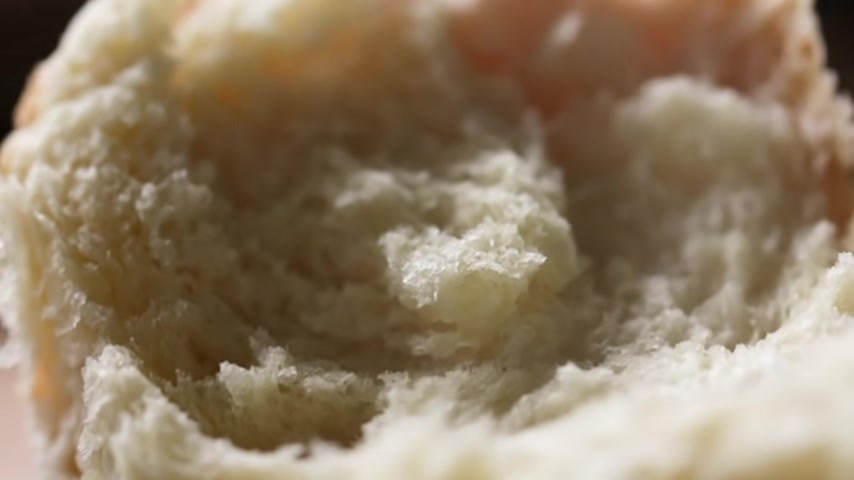
Dinner rolls are actually a super sexy , super satisfying and honestly like one of the better parts of a big banquet meal .
It's a very easy introduction to , to do an introduction to bread .
But dinner roll is basically like your fourth utensil , right ?
So you have your fork , your knife , your spoon and then you have your dinner roll and that's what's gonna help sop up all of like the really best parts of your dinner .
So respect it .
There's a bunch of different types of flour out there .
You've got the whole wheat that has the brand in there .
You've got almond flour , all these different gluten free options .
Nowadays , we're going to use all purpose when you're starting out making bread .
All purpose is a great one to start with because it is so refined .
It's very predictable .
It's gonna give you the result that you're after beast .
So there's like three standard ones you can get in the US and around the world , they're called different things in different places .
You have active dry , you have instant yeast and you also have fresh here .
We have all the different tests for yeast .
So to see what would the result be in the bread ?
Could we really taste or see a difference in the rising in terms of speed .
How big the doughs got all of that ?
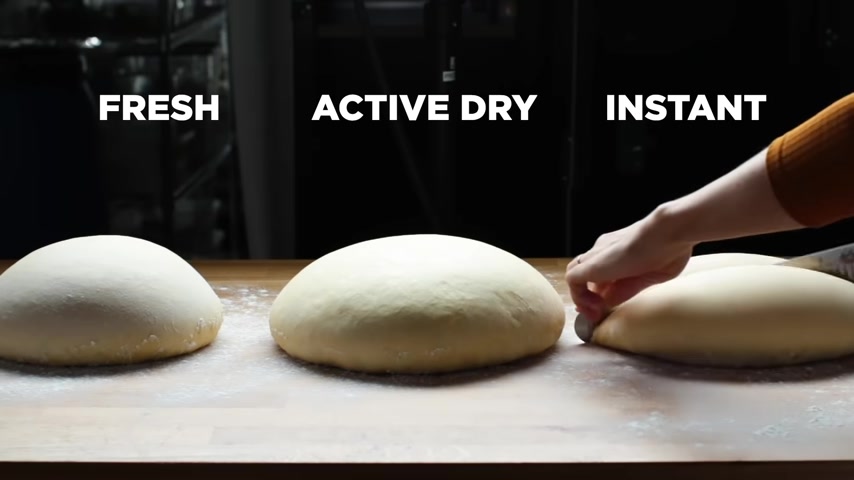
So we bloomed the fresh and the active dry .
We did not bloom the rapid because it is not recommended to do .
So we all use the exact same amount of ingredients .
We use flour from the same bag but all of ours were different levels of soft .
The instant was super hard .
The active dry was kind of the mama bear of them .
It was like kind of the in between and the fresh was like super soft .
So because we want to have a little bit more control over our dough , we wanted to use active dry .
So to wake it up , we're going to put it in a liquid and the sugar and butter are gonna act as food for the bees to make our blooming liquid .
We're going to start with some warm milk .
We're gonna add a little bit of warm water and melted butter to that .
We're gonna add sugar .
Sugar is gonna be the main thing that's gonna give our yeast some food to really quickly start to work in , goes our yeast .
We're gonna stir it to make sure that the Granules can evenly dissolve and be mixed immediately with all those ingredients .
So we're gonna leave that for about five minutes and it should look something like this .
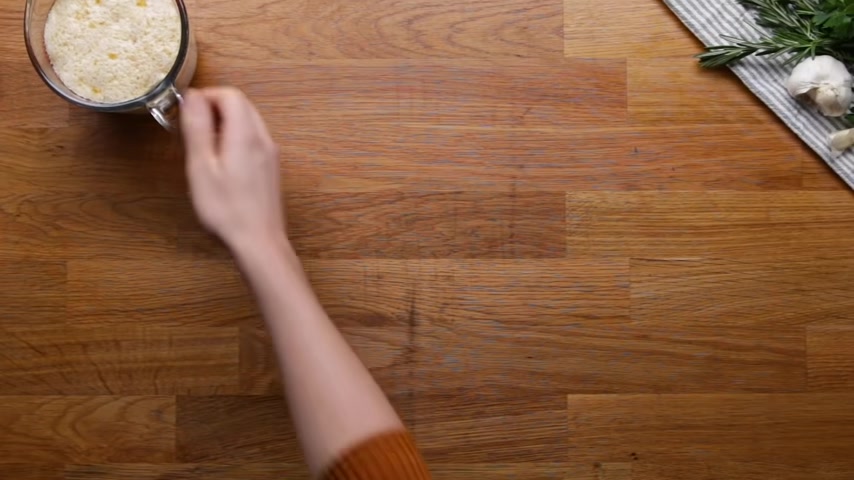
If you don't see anything close to this , you should throw everything away and start with some new yeast .
Your yeast might be old or dead .
So once we've bloomed our yeast , we're gonna set it off to the side and goes the flour and the salt and we're gonna just super quickly incorporate the salt into the flour again .
So it doesn't like hit a huge block of salt .
When the yeast goes in , we're gonna add an egg to this dough that's gonna further enrich our dough .
It's also gonna give us a little bit of color , a bit of extra flavor and a bit of of add it to our bloomed yeast mix and then just quickly as you can pour it into the flour .
And I'm gonna use the same knife just to hydrate as much of the flour as quickly as I can .
So once I'm getting it to a roughly kind of shaggy dough , I can pour it out of my bowl without making too huge of a mess onto a clean floured surface and really start to make this into a dough .
The dough is definitely on the water side .
So you want to keep a little bit of bench flour and that just means a little extra flour around to add to your dough as you go to make it a little bit easier to work with .
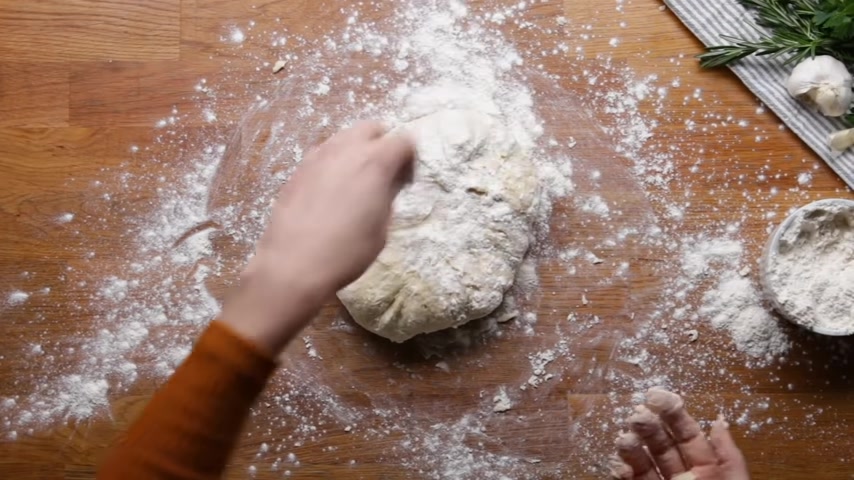
And so that it's not too wet , the cool thing with bread is that we is better unlike pastry , which you want to be on the dryer side .
So it's pretty fun to work with .
It's pretty easy to work with as well .
But if it's really sticking to your hands or to the surface , all you need to do is add a little bit more flour and it'll be much easier to work with .
And depending on like how old your flour is , uh , how big your egg is .
I mean , there's so much that's going in here , you're probably gonna need more flour than anything before you go too far .
Get all these extra bits off your hand .
So when you first start rolling , because no matter what , like you're going to have a little bit of those scraggly bits on your hands .
So get those off and start incorporating those into your dough early so that you don't have like big scraggly bits later on again because you're going to be needing for a good 10 minutes or so , those will pretty easily be incorporated into the dough .
But if you wait too long , then you'll just have like a big chunk .
So kneading , this is one thing that I think people tend to under do almost always .
So if you're doing this by hand , I'm , I , I see it's like almost impossible to over need .
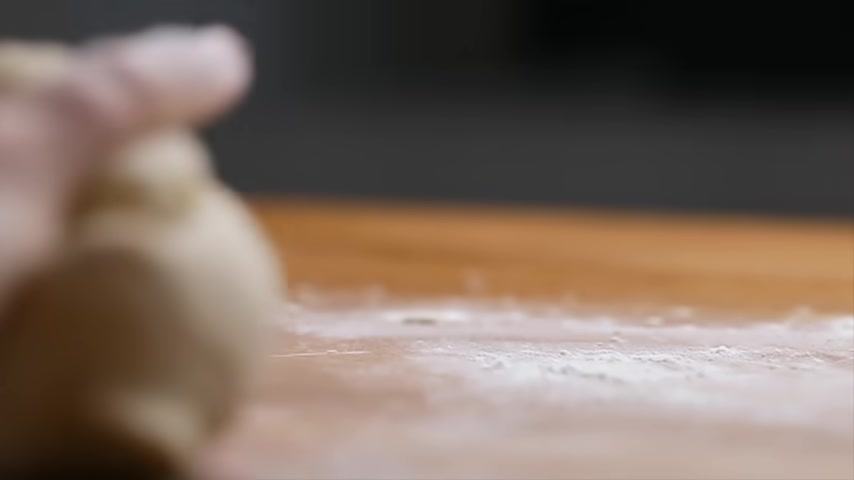
If you are using a stand mixer , it is possible and what will start to happen and it will kind of fall apart .
It'll just turn almost like liquidy and that means that you've just overworked the gluten and you over needed it .
But by hand , trust me , you're probably underneath it .
What I like to do is I like to roll the dough on top of itself and then push it out , rotate , fold it over itself , push again , rotate , pull over itself and push so you can just continue to do this .
I like to work kind of in a bit of a ball shape , always making kind of the shape of a roll .
And once I'm getting the dough to a place that I kind of like , I'm actually going to switch to this heart method .
It just makes it a little bit more efficient .
So you just roll it back and then by the time you've come down towards you , it's in the shape of a cylinder almost and then you roll it the other way .
So you're making sure that you're really evenly needing out the dough and not totally exhausting one of your arms .
And to tell that you've needed enough , a really easy thing to do is to pull off a piece of the dough and make a little bit of a window pane with it and stretch it out .
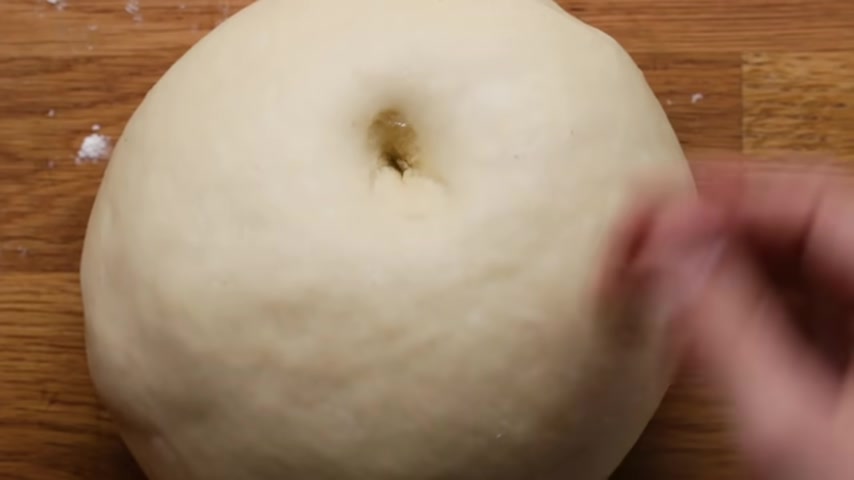
If it doesn't tear , you can actually see those strands of gluten that have developed .
And that should give you a pretty good indicator that your dough is ready to rise or you can push into the dough .
And if it bounces back at you , you've developed enough gluten and the dough is ready to sit .
Once we're ready , we're going to oil a bowl , put our dough inside of it , make sure that it's covered in the oil as well .
So it doesn't stick and then cover with cling film to rise in a warm area and then to get all of the dough and flour and everything off the bench , these bench scrapers are amazing and such an easy like cooks tool to definitely get one as this cling film kind of fogs up .
That's actually all this gas being released that we talked about .
That's the yeast working .
So , so all of that rising in that dough is creating a little bit of like condensation within the bowl .
So this is actually a rise .
The proof is gonna happen after it's doubled in size .
If you want a slow rise , you can put the dough in your fridge .
Whereas if leaving it out in a warm place , it'll happen a lot quicker with active dry yeast .
It should double in size in about an hour , take off the clang .
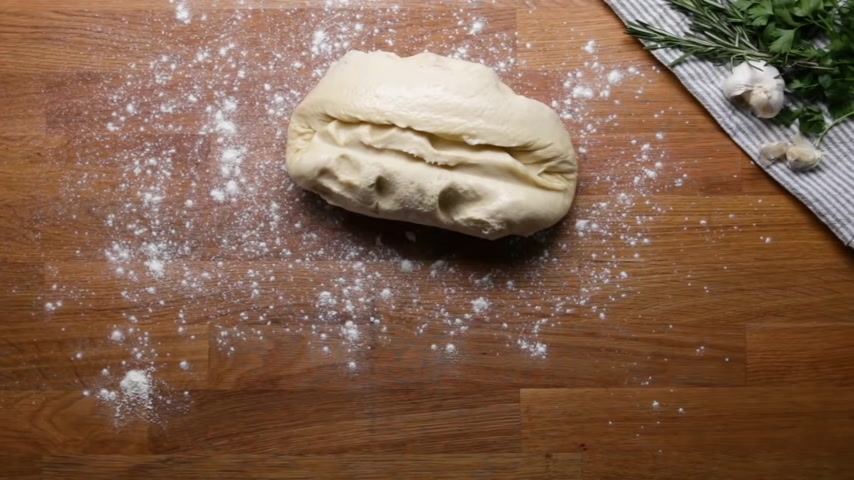
And so we punch it pretty much just because it's fun , but also because we're gonna turn out the dough and even out all those bubbles in the dough .
So I'm gonna need it again for a few minutes and kind of even out the different texture within the dough and then we're gonna cut it into pieces .
So if you want super exact dough balls , you should definitely invest in a scale and weigh them out .
Another trick if you want really even size bread rolls is to always work in half .
So the easiest thing for me is I just continue to cut things in half .
So I have this big piece , I'm going to cut this piece in half and just continue to cut these pieces in half .
And for me , it's easier to make them into round balls again .
Um Again , just to make sure that I'm being super , you know , precise with my cut to get even size bread rolls .
But now that we have our dough divided into its pieces , it's time to shape them into their cute little rolls .
So before I even start shaping it , I'm gonna start to need the little pieces so you can do a few different things .
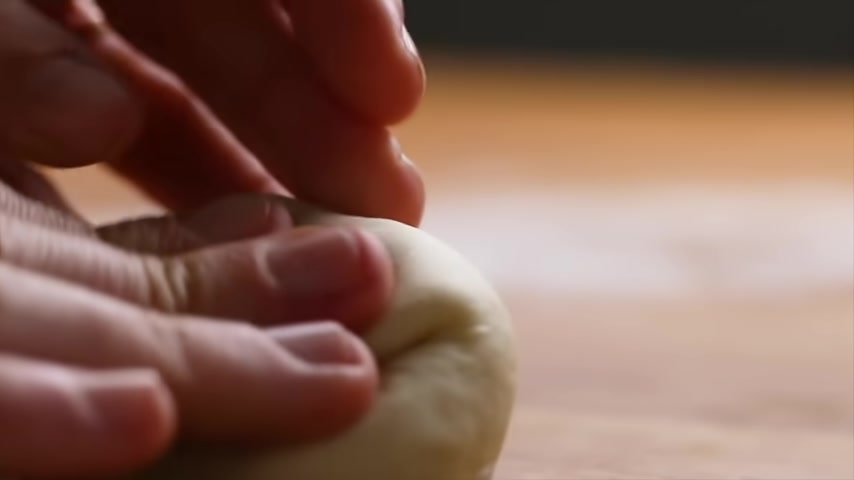
You can need it the same way that we were talking about before and press it into a little disk first and then take the outer pieces and push them into the center .
But what you're really trying to do when it's all said and done , regardless of whatever technique that you use is you're trying to make the bottom of the piece that you're rolling top .
So what we really want is to gather all the outside pieces in the middle and then make the top of it top .
So what I'm doing here is I'm using my hands to kind of pinch from like the middle of the roll to the very bottom .
And when I do that , I'm also rotating my hands .
So every time I'm doing that , I'm squeezing the bottom and making sure that I'm making the top top and making all the ugly pieces on the bottom .
So taking time with shaping , like you've gotten it this far , you know , make sure that they're really beautiful when it's all said and done .
But this is also something that you can definitely outsource .
I always get made fun of it tasty because I'm always trying to like give people jobs to do .
But , you know , if you have a whole bunch of people coming over , this is definitely an easy way to get everyone involved and playing with dough is very satisfying .

There's just something about it that's very , like soothing and very like soulful in some ways .
So there's no one who's gonna say no .
I mean , it's so fun to do .
So , once we're happy with all of our shaped dough , I'm gonna place them on a parchment lined baking sheet and you want them to be a little bit far , but not too far because I really want these to touch a little bit .
That's the dinner roll .
Look like you got to have it .
I know you're eager , you've gotten these all and they're perfect shapes so they need to rise just a little bit more .
So the first one was the rise and now our rolls are going to proof we're gonna cover it up with clay and then let's sit for 30 minutes an hour .
We want them to rise again .
We've been a little bit like needy with the dough if you guys have had like too much time together .
So now the dough needs a little bit of space uh , before it'll really perform and look how pillowy those are .
I mean , seriously , like , look how much they've risen and they're now touching but not too much .
Last thing .
So if you watched our pie episode , we tested a whole bunch of different washes to put on dough before it goes in the oven .
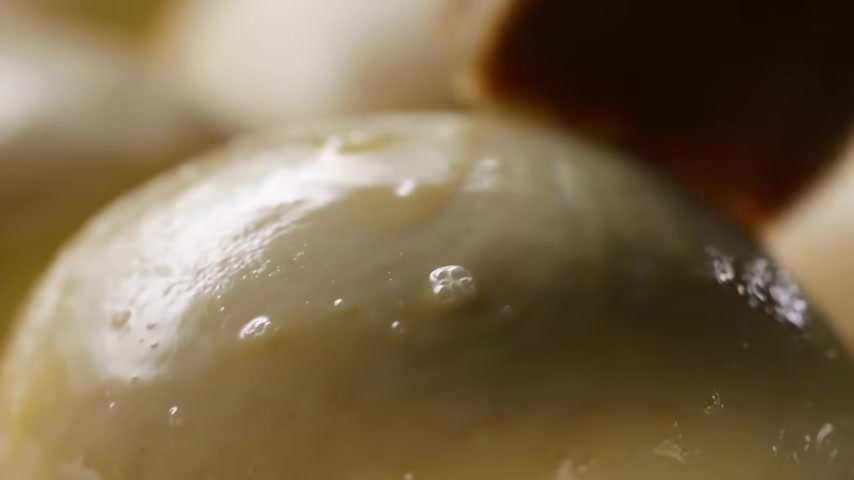
And honestly , the egg is just super easy and classic and gives you a really great shiny brown and for that dinner roll shine , like you need an egg wash .
Take your time like these are delicate little babies at this point .
So if you come in real hot with that brush and just like really poke them , they will deflate it a little bit .
Now , this is totally optional , but we are going to top ours with a little bit of sea salt mostly because I just could never get enough salt .
The season high , the higher you go , it'll be a more even distribution .
If you see them too close to the roll , it'll all kind of get in one clump .
I'm sure you've experienced that before .
Just at a few different temperatures .
So bread ideally does need a pretty high heat , but these are little baby rolls .
So we did have to throw back the heat a little bit .
We ended up with 3 75 .
Wow .
And that gives us like the perfect amount of brown while cooking the rolls through freshly baked bread is just one of those things that , I mean , the crumb on this , the texture here .
I mean , you could sleep on this .
It's like a pillow .
I mean , look at that .
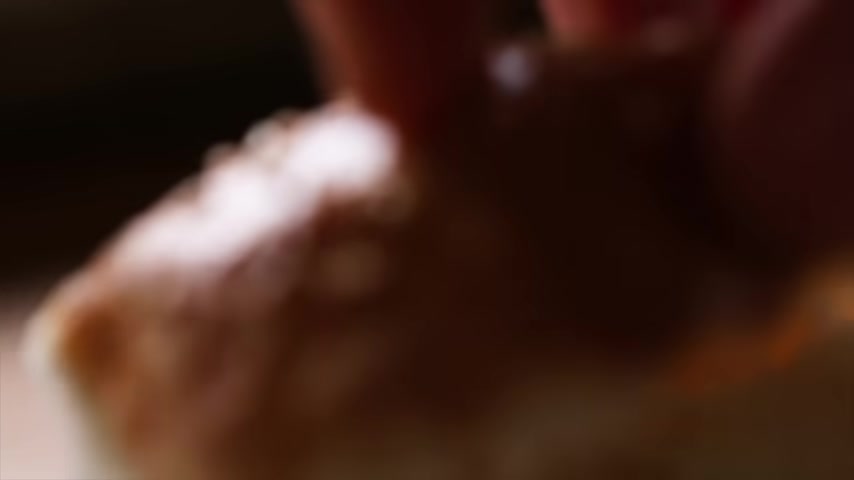
It's got a great sweet savory flavor on the inside .
Got the sesame seeds .
You can do garlic butter , you can do , I mean anything or you can do nothing and just sop it up with some gravy or butter or jam or it cannot be overstated .
How much this fourth utensil will contribute to your next dinner party .
I'm not eating anything else's holiday season , aside from bread rolls , make these bread rolls .
Tag us in your photos because I need to know that the world believes in bread rolls as much as we believe in bread rolls .
Are you looking for a way to reach a wider audience and get more views on your videos?
Our innovative video to text transcribing service can help you do just that.
We provide accurate transcriptions of your videos along with visual content that will help you attract new viewers and keep them engaged. Plus, our data analytics and ad campaign tools can help you monetize your content and maximize your revenue.
Let's partner up and take your video content to the next level!
Contact us today to learn more.